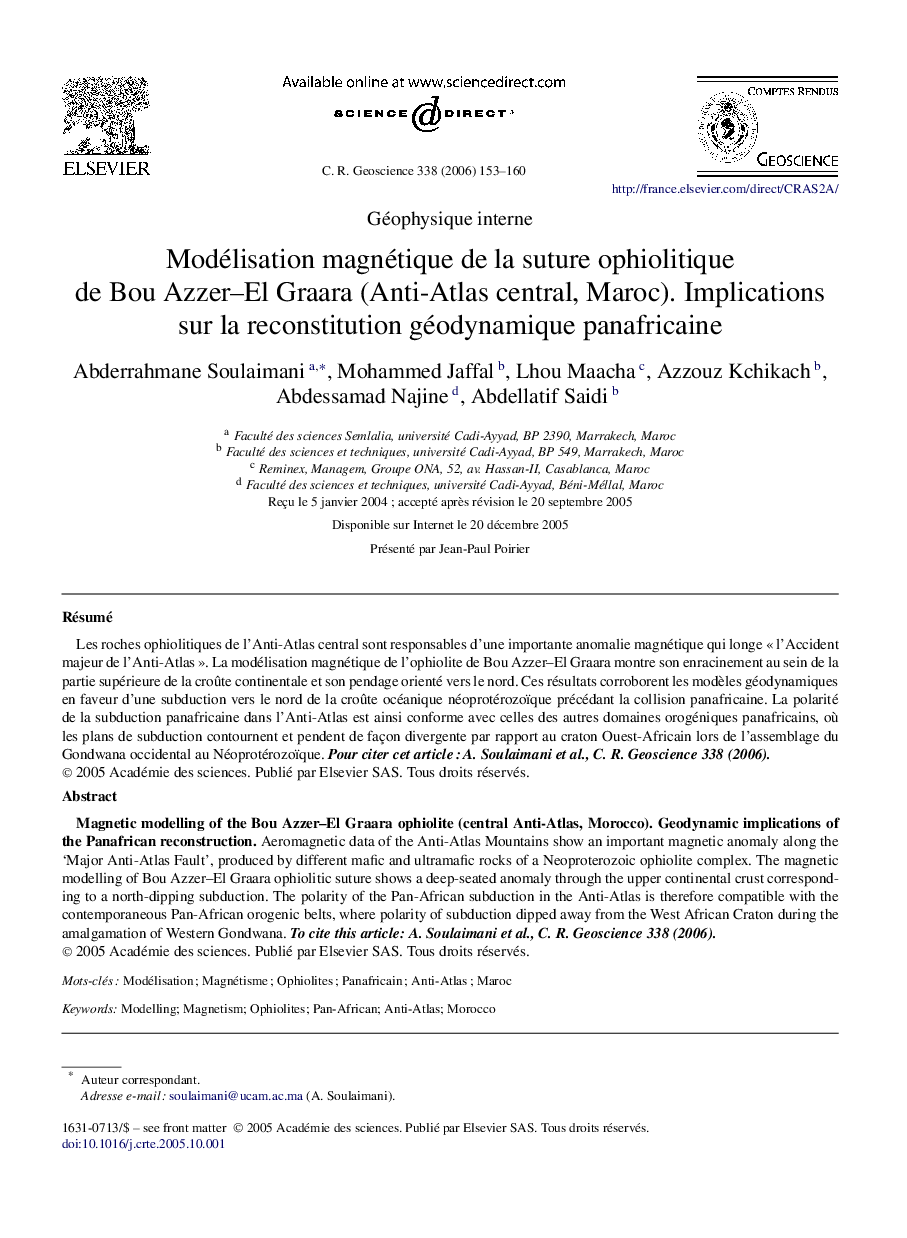| کد مقاله | کد نشریه | سال انتشار | مقاله انگلیسی | نسخه تمام متن |
|---|---|---|---|---|
| 4463120 | 1313552 | 2006 | 8 صفحه PDF | دانلود رایگان |

RésuméLes roches ophiolitiques de l'Anti-Atlas central sont responsables d'une importante anomalie magnétique qui longe « l'Accident majeur de l'Anti-Atlas ». La modélisation magnétique de l'ophiolite de Bou Azzer–El Graara montre son enracinement au sein de la partie supérieure de la croûte continentale et son pendage orienté vers le nord. Ces résultats corroborent les modèles géodynamiques en faveur d'une subduction vers le nord de la croûte océanique néoprotérozoïque précédant la collision panafricaine. La polarité de la subduction panafricaine dans l'Anti-Atlas est ainsi conforme avec celles des autres domaines orogéniques panafricains, où les plans de subduction contournent et pendent de façon divergente par rapport au craton Ouest-Africain lors de l'assemblage du Gondwana occidental au Néoprotérozoïque. Pour citer cet article : A. Soulaimani et al., C. R. Geoscience 338 (2006).
Aeromagnetic data of the Anti-Atlas Mountains show an important magnetic anomaly along the ‘Major Anti-Atlas Fault’, produced by different mafic and ultramafic rocks of a Neoproterozoic ophiolite complex. The magnetic modelling of Bou Azzer–El Graara ophiolitic suture shows a deep-seated anomaly through the upper continental crust corresponding to a north-dipping subduction. The polarity of the Pan-African subduction in the Anti-Atlas is therefore compatible with the contemporaneous Pan-African orogenic belts, where polarity of subduction dipped away from the West African Craton during the amalgamation of Western Gondwana. To cite this article: A. Soulaimani et al., C. R. Geoscience 338 (2006).
Journal: Comptes Rendus Geoscience - Volume 338, Issue 3, February 2006, Pages 153–160